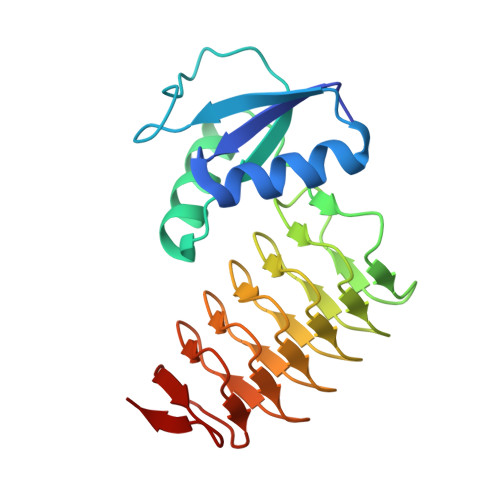Crystal structure and catalytic mechanism of PglD from Campylobacter jejuni.
Olivier, N.B., Imperiali, B.(2008) J Biol Chem 283: 27937-27946
- PubMed: 18667421
- DOI: https://doi.org/10.1074/jbc.M801207200
- Primary Citation of Related Structures:
3BSS, 3BSW, 3BSY - PubMed Abstract:
The carbohydrate 2, 4-diacetamido-2, 4, 6-trideoxy-alpha-D-glucopyranose (BacAc(2)) is found in a variety of eubacterial pathogens. In Campylobacter jejuni, PglD acetylates the C4 amino group on UDP-2-acetamido-4-amino-2, 4, 6-trideoxy-alpha-D-glucopyranose (UDP-4-amino-sugar) to form UDP-BacAc(2). Sequence analysis predicts PglD to be a member of the left-handed beta helix family of enzymes. However, poor sequence homology between PglD and left-handed beta helix enzymes with existing structural data precludes unambiguous identification of the active site. The co-crystal structures of PglD in the presence of citrate, acetyl coenzyme A, or the UDP-4-amino-sugar were solved. The biological assembly is a trimer with one active site formed between two protomers. Residues lining the active site were identified, and results from functional assays on alanine mutants suggest His-125 is critical for catalysis, whereas His-15 and His-134 are involved in substrate binding. These results are discussed in the context of implications for proteins homologous to PglD in other pathogens.
Organizational Affiliation:
Departments of Chemistry and Biology, Massachusetts Institute of Technology, Cambridge, Massachusetts 02139.















